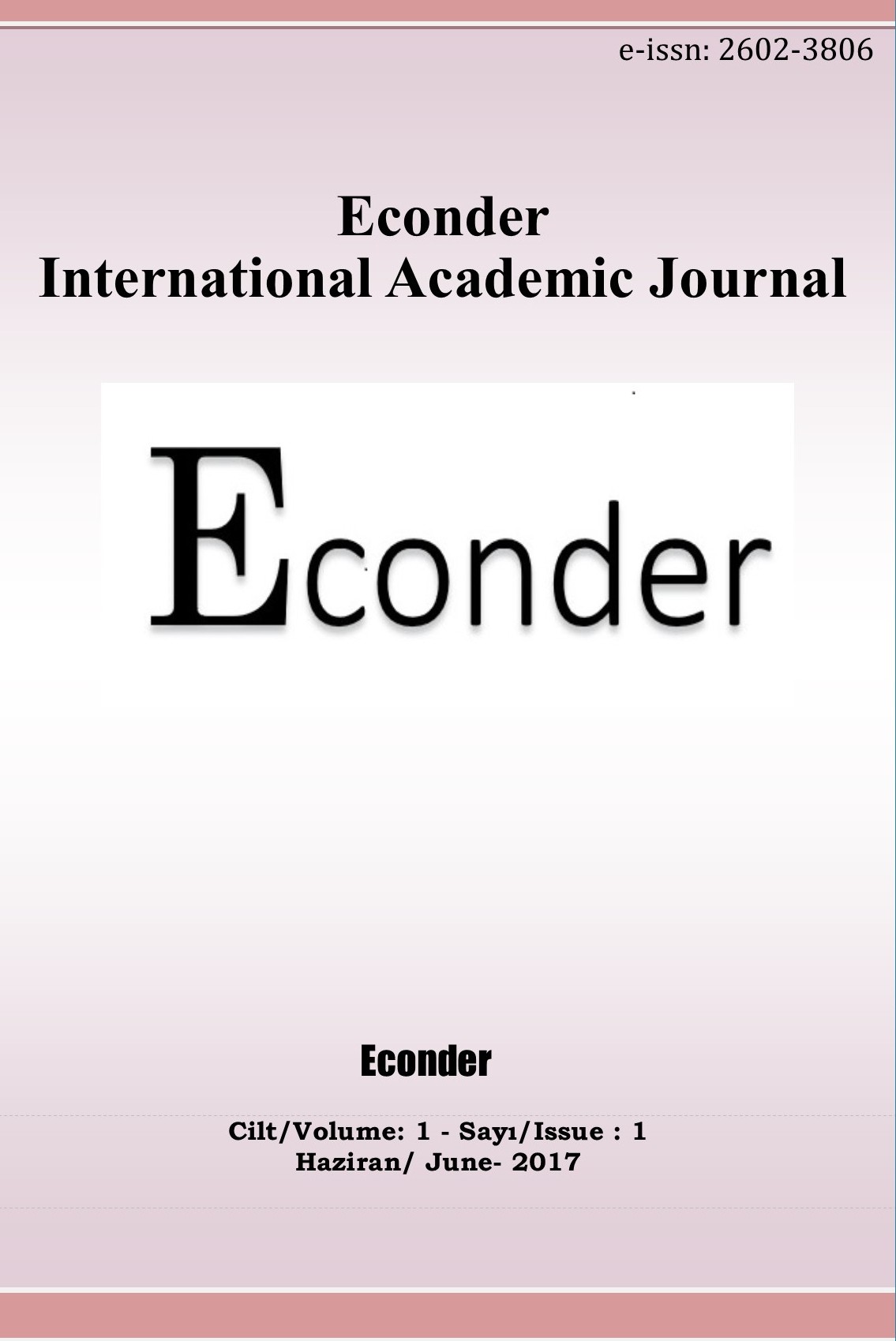Tutundurmanın Bileşenlerinin Sınıflandırılması Üzerine Bir Teorik Tartışma ve Bir Tanım Önerisi
Bu çalışmada pazarlama karmasının tutundurma bileşenine ilişkin literatürde yer alan belirsizlikleri ve tartışmalı konuları tespit etmek amacıyla öncelikle tutundurma üzerine bir literatür taraması gerçekleştirilmiştir. Bu süreçte tutundurma kavramının tanımı, bileşenleri ve özelde kişisel satış, doğrudan ve dijital pazarlama ve satış geliştirme alt bileşenlerinde belirsizlikler tespit edilmiştir. Teorik tartışma olarak yürütülen çalışmada tutundurma kavramı “Öncelikle pazarlama stratejisini desteklemek ve sonra satışları artırmak, desteklemek ve ürünlerin pazar şartlarında sürdürülebilir bir şekilde kalıcılığını her türlü soyut ve somut konumlandırmayla sağlamak ve pazarlama politikalarını desteklemek amacıyla; -tüketici davranışlarını da bu bağlamda etkilemek için- kişisel satış, halkla ilişkiler, reklam, doğrudan ve dijital pazarlama ve satış geliştirme araçlarının koordineli bir biçimde bütünleşik pazarlama iletişimi çerçevesinde eşgüdümlenmesidir.” olarak tanımlanmıştır. Buna ek olarak kişisel satış ve doğrudan ve dijital pazarlama alt bileşenlerinde araç-amaç karmaşasından kaynaklanan bir sınıflandırma hatası ve satış geliştirme alt bileşeninde de kısa-uzun vadeli uygulamalara bağlı olarak hatalar tespit edilerek bu alanlarda yeni sınıflandırma önerileri gerekçeleriyle birlikte literatüre kazandırılmıştır. Çalışma tutundurma kavramına yeni bir tanım ve alt bileşenlerine yeni bir sınıflandırma önerisi getirmesi nedeniyle literatüre katkıda bulunmaktadır. Özellikle günümüz toplumunun tutundurma kültürü olarak adlandırılması ise çalışmanın incelediği konunun önemini göstermektedir.
Anahtar Kelimeler:
Pazarlama Karması, Tutundurma, Kişisel Satış, Doğrudan ve Dijital Pazarlama, Satış Geliştirme, Tutundurmanın Tanımı
A Theoretical Discussion on The Components of the Promotion and a Definition Suggestion
In this study, first of all, a literature review on promotion was conducted in order to identify the uncertainties and debates in the literature regarding the promotion component of the marketing mix. In this process, uncertainties were identified on the definition of the concept of promotion, its components and in particular the sub-components of personal selling, direct and digital marketing and sales development. In the study conducted as a theoretical discussion, the concept of promotion was defined as “The coordination of personal selling, public relations, advertising, direct and digital marketing and sales development tools within the framework of integrated marketing communication in order to affect consumer behavior in this context to increase and support primarily marketing strategy and then the sales and to ensure the sustainability of products in market conditions with all kinds of abstract and concrete positioning and to support marketing policies”. In addition, a classification error arising from the tool-purpose confusion in personal sales and direct and digital marketing sub-components and errors in the sales development sub-component due to short-long-term applications were determined and new classification proposals in these areas were brought to the literature with their justifications. This study contributes to the literature by suggesting a new definition for the concept of promotion and a new classification for its sub-components. The fact that today's society is called a promotion culture shows the importance of the subject that the study examines.
Keywords:
Marketing Mix, Promotion, Personal Selling, Direct and Digital Marketing, Definition of the Promotion,
___
- Addis, M. ve Holbrook, M.B. (2001). On the Conceptual Link Between Mass Customisation and Experiential Consumption: An Explosion of Subjectivity. Journal of Consumer Behaviour, 1(1), 50-66.
- Addis, M. ve Podesta, S. (2005). Long Life to Marketing Research: A Postmodern View. European Journal of Marketing, 39(3/4), 386-412.
- Blattberg, R.C., Neslin, S.A. (1989). Sales Promotion: The Long and the Short of It. Marketing Letters, 1(1), 81-97.
- Brassington, F. ve Pettitt, S. (2007). Essentials of Marketing, Prentice Hall, Harlow.
- Chandon, P., Wansink, B. ve Laurent, G. (2000). A Benefit Congruency Framework of Sales Promotion Effectiveness. Journal of Marketing, 64(4), 65-81.
- Fawkes, J. (2004). The Public Relations Book, Routledge, Oxford.
- Hackley, C. (2005). Advertising & Promotion: Communivating Brands, Sage Publications, London.
- Jaramillo, F. ve Marshall, G.W. (2004). Critical Success Factors in the Personal Selling Process: An Empirical Investigation of Ecudorian in the Banking Industry. The International Journal of Bank Marketing, 22(1), 9-25.
- Ji, K. ve Ha, H.-Y. (2021). An Empirical Test of Mobile Service Provider Promotions on Repurchase Intentions. Sustainability, 13(5), 2894.
- Kaser, K. (2013). Advertising & Sales Promotions, South-Western Cengage Learning, Mason.
- Knights, D. ve Morgan, G. (1993). Organization Theory and Consumption in a Post-Modern Era. Organization Studies, 14(2), 211-234.
- Kotler, P. (2000). Marketing Magament, Pearson, New Jersey.
- Kotler, P. ve Armstrong, G. (2018). Pazarlama İlkeleri, Beta Yayınları, İstanbul.
- Moufhaim, M. ve Lichrou, M. (2019). Pilgrimage Consumption and Rituals: Spiritual Authenticity in a Shia Muslim Pilgrimage. Tourism Management, 70, 322-332.
- Mucuk, İ. (2017). Pazarlama İlkeleri, Türkmen Yayınevi, İstanbul.
- Peattie, K. ve Peters, L. (1997). The Marketing Mix in the Third Age of Competing. Marketing Intelligence & Planning, 15(3), 142-150.
- Perreault, W.D. Jr., Cannon, J.P. ve McCarty, E.J. (2012). Essentials of Marketing, McGraw Hill-Irwin, New York.
- Porter, M.E. (1980). Competitive Strategy: Techniques for Analyzing Industries and Competitors, The Free Press, New York.
- Raaij, W.F.v. (1993). Postmodern Consumption. Journal of Economic Psychology, 14(3), 541-563.
- Raggiotto, F., Mason, M.C. ve Moretti, A. (2018). A Lens of Analysis for Consumption Practices in Tattooing. Micro & Macro Marketing, 27(2), 283-308.
- Reynolds, T.J., Gutman, J. (2008). Advertising is Image Management. Understanding Consumer Decision Making: The Mean-End Approach to Marketing and Advertising Strategy, Reynolds, T.J., Olson, J.C. (eds.), 1. Baskı, New Jersey: Taylor & Francis.
- Ries, A. ve Trout, J. (1986). Marketing Warfare, McGraw Hill, New York.
- Thorson, E. ve Duffy, M. (2012). Advertising Age: The Principles of Advertising and Marketing Communication at Work, South-Western Cengage Learning, USA.
- Vercic, D., Ruler, B.v., Bütschi, G. ve Flodin, B. (2001). On the Definition of Public Relations: A European View. Public Relations Review, 27(4), 373-387.
- Wilcox, D.L., Cameron, G.T. ve Reber, B.H. (2015). Public Relations: Strategies and Tacitcs, Pearson, Harlow.
- Williams, A. ve Mullin, R. (2008). The Handbook of Field Marketing: A Compete Guide to Understanding and Oursourcing Face-to-Face Direct Marketing, Kogan Page, London.
- Yudelson, J. (1999). Adapting McCarthy’s Four P’s fort he Twenty-First Century. Journal of Marketing Education, 21(1), 60-67.
- Yayın Aralığı: Yılda 2 Sayı
- Başlangıç: 2017
- Yayıncı: Hayrettin KESGİNGÖZ
